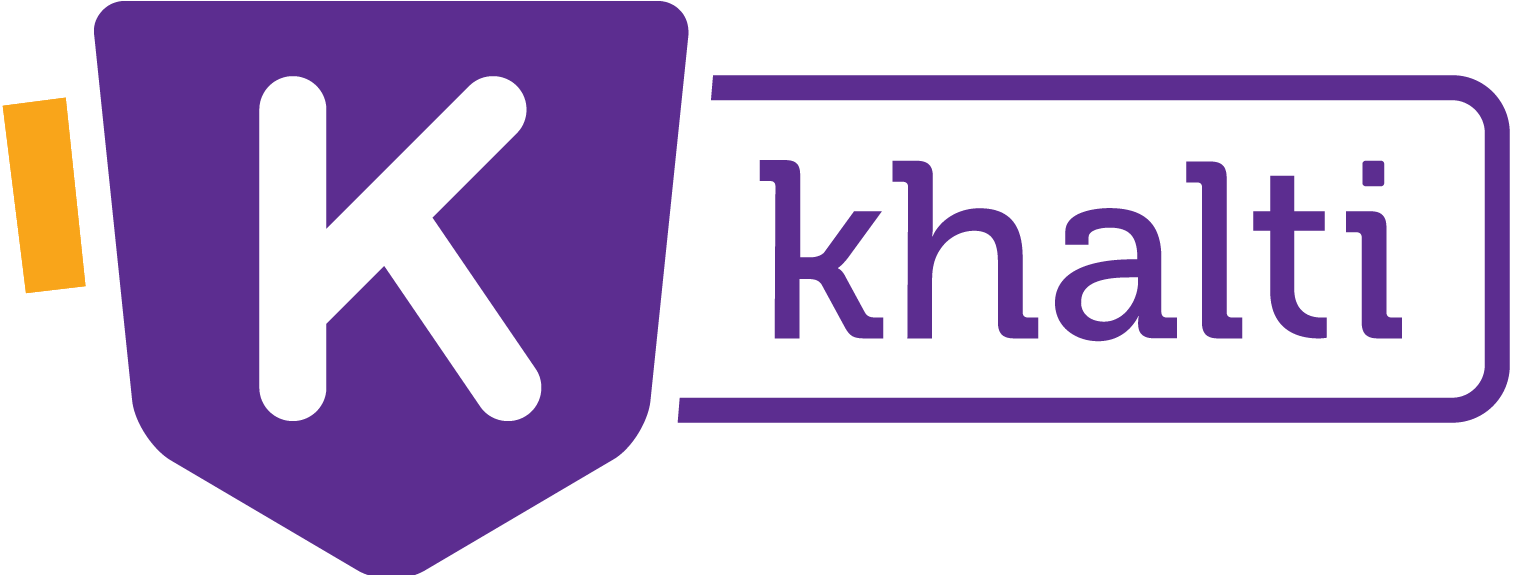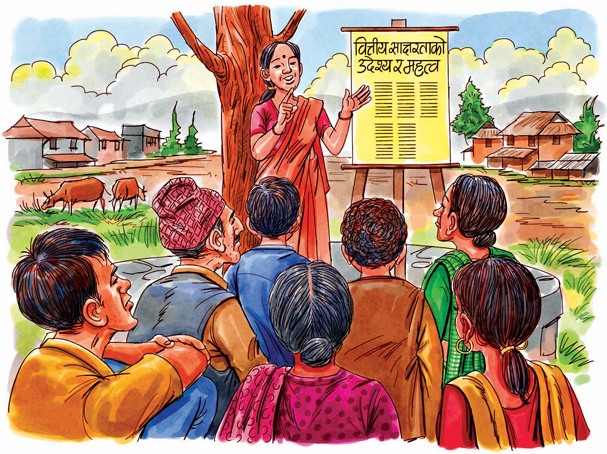Financial Literacy, Financial Education, and Financial Capability in Nepal
Financial literacy, financial education, and financial capability are all related terms with different meanings. They each have a unique meaning and strength. We can only convey something with the spirit if we understand how to use these words correctly. Sometimes the term financial education is taken in a broad sense as synonymous with both financial literacy and financial capability, but this does not properly give one the true sense. Let us discuss the true meaning of these words separately.
What is Financial Literacy?
The word literacy means a person’s knowledge or learning of a particular subject. Therefore financial literacy means learning basic financial matters. It generally means understanding money, payment, deposit into and withdrawal from a financial institution, earnings and expenditure under a given set of curricula. Financial literacy educates us to economize spending, save money and keep money safe because we need money to safeguard our family in the near future and spend money on other social and family events. One can understand the contents of money matters if he has attained knowledge of financial literacy but he cannot make self-decisions on whether to invest money on fixed assets or equity shares or put it into a bank time deposit. Therefore, financial literacy is based on a certain curriculum on money matters. One goes through topics on money and finance and gets knowledge on financial matters but one doesn’t’ have knowledge about making complicated financial decisions.
Financial literacy education can be delivered to students in schools and colleges under certain curricula. Everyone needs a clear understanding of money, banking, insurance, stock market, borrowing, investment, basic mathematics, financial laws etc. Understanding these topics does not necessarily mean that a person has the decision making power overall financial problems. Sometimes financial service providers also arrange different kinds of training on financial matters for their customers/group members.
Therefore, planning contents and imparting basic education on financial matters is known as financial literacy. It can start with very basic notions, such as awareness of the use and characteristics and choices of available financial products.
Financial literacy is the outcome of this process and is defined as a combination of financial awareness, knowledge, skills, attitude and behaviours necessary to make sound financial decisions and ultimately achieve financial wellbeing (OECD/INFE, 2012). Financial literacy can be described through several stages depending on individual/household, financial, economic and social contexts. It can start with very basic notions, such as awareness of the characteristics and use of available financial products, progressing to more advanced ones, which deal with the knowledge of financial concepts and of the development of skills and attitudes for the management of personal finance in the short and long term. Ultimately, all stages of financial literacy encompass positive behavioural change for individuals and households. (G20 Presidency and the OECD Publication)
Financial Education
Education is the learning or the process of acquiring knowledge and developing the power of reasoning and judgment. Therefore financial education is a lifelong concept and emphasizes the development of human abilities to understand money and make decisions about financial problems. While financial literacy focuses on an understanding of the basics of the subject matter, financial education, which includes financial literacy, is more improved and covers practical skill to make a decision on financial problems.
Our society has been changing constantly and is becoming more complicated. We have globally connected markets which offer varieties of product and services to the consumers. It is the consumer who has to make the choice of his own interest out of various alternatives the market offers. It is financial education that makes the consumer aware of his rights to protect himself by acquiring financial education. Social values are fast-changing and modern society has an individualistic behaviour. The financial needs of the consumer also have become complicated and only with the appropriate knowledge and skill in the field of finance and understanding of financial products and services can one make a good decision. Financial education, including financial literacy, begins at the school level and continues throughout one’s lifetime.
Opening an account at any formal financial service provider does not mean that the person is financially educated. It may mean that the account holder has access to formal financial services. The person needs financial literacy/education sessions to understand what is money, how to keep it safely for the future, where to borrow from, what is the rate of interest, what is his financial plan, how s/he should prioritize his needs, how s/he should keep herself/himself safe from unseen future risks and so on.
The definition of financial education developed by the OECD in 2005 and endorsed by G20 leaders in 2012 is used by the majority of countries as: “the process by which financial consumers/investors improve their understanding of financial products, concepts and risks and, through information, instruction and/or objective advice, develop the skills and confidence to become more aware of financial risks and opportunities, to make informed choices, to know where to go for help, and to take other effective actions to improve their financial well-being.” (OECD, 2005a).
Effective financial education can be beneficial for individuals, also for policy and for private stakeholders. Financial education can support financial inclusion policies by making consumers more aware of available financial services and more confident about using them. It is also instrumental not only in enabling consumers to compare financial products and making effective use and choice of these products but also in promoting long-term saving and sound planning for retirement as well as for wiser use of credit.
As such, financial education can contribute to the development of financial systems and markets as well as to the promotion of more transparent competition amongst financial Service providers. In most countries, financial education is also considered as the first line of defence and protection for consumers of financial service products as a complement to appropriate regulatory measures. (G20 Presidency and the OECD Publication)
Financial education cannot build financial capabilities in isolation nor can it guarantee behavioural change. MFO defines financial education in the following way: Financial education equips people with knowledge and skills and strengthens their attitude and belief in themselves, to make and exercise informed, confident and timely money management decisions. (Microfinance Opportunities, 2013)
Financial Capability
Capability is one’s ability to identify the problem and make the appropriate decision. Financial capability signifies being capable of identifying personal financial problems and making appropriate decisions. When a person acquires financial education he becomes capable of identifying financial problems, knows the various alternative solutions to them and can influence the whole
society towards being aware of the complex and dynamic financial world.
The definition of financial capability suggests that initiatives such as financial education and financial inclusion are the only means to this end. The goal is financial capability development.
Financial capability is the combination of attitude, knowledge, skills, and self-efficacy needed to make and exercise money management decisions that best fit the circumstances of one’s life, within an enabling environment that includes, but is not limited to, access to appropriate financial services. (Microfinance Opportunities, 2013)
MFO’s definition states that a financially capable person is someone who:
- Sees the value in managing money proactively (attitude);
- Knows what is needed to make appropriate money management decisions and act on them;
- Has the skills to turn that knowledge into practice;
- Believes and has confidence that she or he is able to act on that desire (self-efficacy); and
- Has access to an environment that enables them to act on that desire. (cfi-blog.org)
The term financial capability and financial literacy can be distinguished according to its definition whereby in order to be financially capable, a person must be more than financially literate, confident and motivated. They also must have genuine access to quality financial products and services in order to help them make a sound decision based on their financial interest. (Zakaria and Sabri; P.3)
The UK government has adopted the following definition: “Financial capability is a broad concept, encompassing people’s knowledge and skills to understand their own financial circumstances, along with the motivation to take action. Financially capable consumers plan ahead, find and use information, know when to seek advice and can understand and act on this advice, leading to greater participation in the financial services market “(HM Treasury, 2007, p. 19).
The Scottish Government’s ‘Financial Capability Discussion Paper’ (2010) offers a definition of financial capability as follows:
- the motivation to efficiently manage finances and effect change
- day-to-day management of finances, for example, effective budgeting and use of bank account
- planning ahead for retirement, other life transitions and unexpected events, for example, by saving
- efficient selection of financial products and the ability to understand these products, for example, by comparing repayment costs before taking a loan
- knowing where and how to seek appropriate financial advice
Financial Education as a means of Financial Inclusion
The ratio of a total number of accounts opened in the financial institutions to the total population of a country could be the data for their access to formal financial services, but it does not mean that all these people are financially capable.
Let us take an example. In a family of 5 people, 3 persons have saving accounts in commercial banks. They know that there are many banks and financial institutions working in the urban areas. They also know banks offer various deposit accounts and also provide loan facility to the businessmen, but they never had classes on financial education -neither formal nor informal. They never went into details about the benefits they can derive from banking services and various interest rates and charges levied by the banks. No doubt, they are literate in other areas except money, banking and finance. One of them is a government employee. He sold a plot of land which fetches him Rs. One crore and wanted to purchase another piece of land at a lower price and save some money for his household expenses. In the market, banks offered three options:1) saving account at 1.5 % interest rate p.a., 2) saving account at 5 %interest rate and 3) fixed deposit at 12 % interest rate, minimum balance required Rs.1 lakh, withdrawal flexible.
Immediately after the sale of land, he deposited money in his saving account fetching a 1.5 % rate of interest. He could have deposited money in another saving account which at least could
fetch a 5 % rate of interest. He might have urgently required that money to buy another plot of land. Therefore, he could not make his mind to keep the money in the fixed deposit account, but by not depositing money in a saving account drawing 5 % interest, he lost Rs.1,16,667/- (1,66,667minus50,000) in four months. He could not purchase the land within four months. He did not care to go to the bank and inquire about the fixed deposit account, which would offer 12 % interest with a flexible withdrawal term. If he had put the money in the term deposit he would have earned Rs.4 lacs.
The above case is mentioned here to make the argument that a person might not be financially capable. One might know something about formal financial services but might still lack efficiency in selecting a financial product and not have the ability to make good financial decisions. For example, in the case described above, opening an account in a bank was no doubt access to financial service. However, it was only the first stage of financial inclusion. An increasing number of accounts in a bank might not necessarily signify meaningful financial inclusion. Therefore, improvement in financial inclusion measured in this way might not contribute to the process of national economic development and sustainability. One should be equipped with sufficient financial knowledge and skill so as to become able to make choices out of various goods and services available in the market and be able to protect one’s rights. Therefore, financial education should be started at the very first level, at the school level if possible, so that at later stages of their lives, people can have the ability to make the best decisions and protect themselves from financial misfortune. Depending on their income they can plan their future and budget their expenses so that they build their future themselves and can contribute to a sustainable national development process.
The World Bank, Financial Inclusion Overview(Last Update 2016) has the following observations:
Financial inclusion means that individuals and businesses have access to useful and affordable financial products and services that meet their needs – transactions, payments, savings, credit and insurance – delivered in a responsible and sustainable way.
Access to a transaction account is the first step toward broader financial inclusion since it allows people to store money, and send and receive payments. A transaction account can also serve as a gateway to other financial services which is why ensuring that people worldwide can have access to a transaction account is the focus of the World Bank Group’s Universal Financial Access 2020 initiative.
Financial access facilitates day-to-day living and helps families and businesses plan for everything from long-term goals to unexpected emergencies. As accountholders, people are more likely to use other financial services, such as credit and insurance, to start and expand businesses, invest in education or health, manage risk, and weather financial shocks, which can improve overall
quality of their lives.
While there has been progress towards financial inclusion, significant challenges remain:
- An estimated 2 billion adults worldwide don’t have a basic account.
- Globally, 59% of adults without an account cite lack of enough money as a key reason, which implies that financial services aren’t yet affordable or designed to fit low-income users. Other barriers to account-opening include the distance from a financial service provider, lack of necessary documentation papers, lack of trust in financial service providers and religion.
- More than 200 million formal and informal micro, small and medium-sized enterprises (MSMEs) in emerging economies lack adequate financing to thrive and grow.
- MSMEs cite a lack of collateral and credit history and business informality as the main reasons for not having an account.
- Some groups are more financially excluded than others: Women, rural poor, and other remote or hard-to-reach populations, as well as informal micro and small firms, are most affected. For example, the gender gap in developing countries is estimated at 9 percentage points: 59% of men reported having an account in 2014, while only 50% of women did.
- Financial inclusion is becoming a priority for policymakers, regulators and development agencies globally.
- The World Bank Group considers financial inclusion a key enabler to reduce extreme poverty and boost shared prosperity and has put forward an ambitious global goal to reach Universal Financial Access (UFA) by 2020.
As countries have accelerated efforts toward financial inclusion, it has become apparent that they face similar hurdles which impede their progress. These include: i) Ensure financial access and services extend to hard-to-reach populations, including women and the rural poor, ii) Increase citizens’ financial literacy and capability so they understand different financial services and products, iii) Make sure everyone has valid identification documents and a low-cost & accessible means for them to be authenticated, iv) Devise useful and relevant financial products
tailored to consumer needs, v) Establish robust financial consumer protection frameworks
References
- Advancing National Strategies for Financial Education; 2013: A Joint publication by Russia’s G20 Presidency and the OECD
- Center for Financial Inclusion Blog. ( cfi-blog.org)
- Introduction-What is Financial Education? (www.pfeg.org)
- Starck, Simon and Ales Trunk; 2013: The Meaning and Concept of Financial Education in the society of Economic changes, (Management, Knowledge and Learning International Conference, Croatia)
- The Importance of Financial Education; 2006: Policy Brief (OECD)
- What is Financial Capability? 2013: Microfinance Opportunities (MFO), Center for Financial Inclusion. (cfi-blog.org)
- Zakaria, Nurul Farhana and Mohamad Fazli Sabri; 2013: Review of Financial Capability Studies, International Journal of Humanities and Social Science (Vol. 3 No. 9)
Cover Photograph courtesy: nbi.com.np
By Yogendra Timilsina
The writer is Ex-Deputy Director of Nepal Rastra Bank/Freelance Microfinance and Financial Literacy Professional.
This article was originally published at Nepal Rastra Bank’s Anniversary Publication, NRB Samachar 2074.








